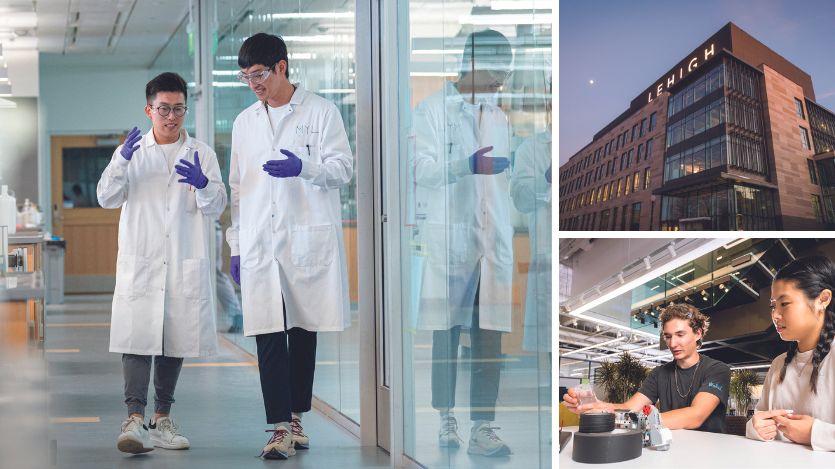
Lehigh’s cutting-edge Nano | Human Interfaces (NHI) Visualization and Data Analysis Lab, housed in the HST Building, will serve as the main control center for immersive remote collaborations among Lehigh researchers and collaborators at Ohio State University (OSU) working on the development of two novel metallic alloys.
In February, Lehigh University entered into a Cooperative Agreement—providing up to $25 million over five years—with the U.S. Army Research Lab (ARL), with OSU as a subcontracted collaborator, to develop novel structural materials for high-strength applications. The first installment of $3 million has been authorized by Congress.
Lehigh’s NHI Presidential Engineering Research Initiative is led by Martin Harmer, Alcoa Foundation Professor of Materials Science and Engineering. Also integrally involved is Chris Marvel ’12 ’16 PhD, a former research scientist in the MSE department who is now an assistant professor in the Mechanical and Industrial Engineering Department at Louisiana State University. Marvel will continue to play a leading role in the Cooperative Agreement.
The Lehigh–Ohio State team’s proposal, “Lightweight High Entropy Metallic Alloy Discovery (LHEAD),” includes three basic science projects that seek to address the critical need for longer-lasting and more resilient alternative structural materials for use in advanced material systems such as hypersonic missiles.
The first two projects aim to develop new generations of superalloys (high-strength materials that can function at extreme temperatures) and leverage recent advancements in solid-state materials processing to develop next-generation high-entropy metallic alloys for improved performance. In addition to alloy design, the team will also explore powder-based material processing, phase transformation pathways, atomic-resolution characterization, in situ high-throughput mechanical testing, and additive manufacturing.
The third project, rooted in Lehigh’s NHI initiative, will support the first two by providing participating researchers with unique resources to improve their communication, problem-solving, and collaborative use of research instrumentation.
Additional Rossin College collaborators include professors Helen Chan and Masashi Watanabe (MSE) and Brian Chen (computer science and engineering). Kate Arrington, a professor of psychology in Lehigh’s College of Arts and Sciences, and Andrea Harmer, NHI director of education innovation, are also members of the team.
“We are thrilled to be partnering with ARL on this important work,” says Harmer. “The LHEAD project has the potential to lead to tremendous advancements in both materials development and in how scientists conduct research together.”
The Nano | Human Interfaces Visualization and Data Analysis Lab in the basement of the HST Building features six 98-inch touchscreens, virtual and augmented reality interfaces, and controls that allow secure remote access to electron microscopes located at Lehigh and in Ohio State’s Center for Electron Microscopy and Analysis (CEMAS). Ohio State’s laboratory will have similar controls to allow researchers there to access Lehigh’s microscopes.
Remote characterization and simulation capabilities will allow researchers to interact as they would if they were collecting and analyzing data in the same location. The team plans to extend this technology to other types of instrumentation, such as equipment used for mechanical testing, 3D printing, and simulations, and to enrich these remote experiences with augmented reality.
The new Lehigh facility also includes a human observation lab in which cognitive scientists can track, using a system of cameras and software for observation of eye gaze and human behavior, how researchers work as a team and how they interact with scientific instruments.
These observations will help improve the research experience by identifying potential barriers to accelerate scientific discovery, Harmer says, and will be used to develop a framework for an artificial intelligence user assistance capability that could guide researchers in deciding which experiments to conduct and “speed up the process of doing research.”
Photo courtesy Christa Neu

